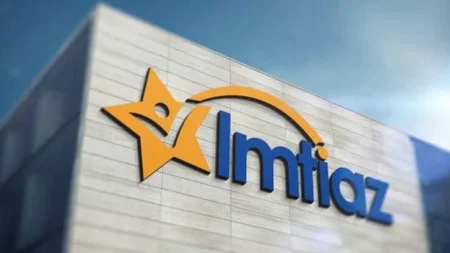ISLAMABAD: The government has formally requested the National Electric Power Regulatory Authority (Nepra) to approve a reduction in power purchase rates from four public sector power plants, potentially resulting in approximately Rs1.58 trillion in savings over the remaining lifespans of these plants under revised agreements.
The proposal seeks to modify existing contracts from a ‘take or pay’ structure to a ‘hybrid take and pay’ model, reduce the rate of return, and cap dollar indexation at Rs168.
Nepra has scheduled a public hearing for April 24 to discuss the proposal jointly submitted by the four government-owned power plants (GPPs) and the Central Power Purchasing Agency (CPPA), an entity within the power division.
Details of the Power Plants and Projected Savings
The four power plants in question have a combined capacity of approximately 3,700 MW.
These include two LNG-based projects—Balloki and Haveli Bahadur Shah, each with a capacity of about 1,220 MW (together contributing an estimated savings of Rs1.1 trillion)—as well as the 747 MW Guddu Power Plant and the 510 MW Nandipur Power Project, which are expected to save around Rs355 billion.
All four plants are federally owned. The overall savings from these projects, in terms of capacity charges, operation and maintenance costs, and other related expenses, amount to about Rs1.6 trillion.
Formal procedures are also underway to add two LNG projects from the Punjab government, located at Bhikki and Trimmu.
Once these are included, the total savings from public sector projects could rise to Rs2.16 trillion, according to official sources.
Negotiated Settlement Agreements (NSAs)
The CPPA and GPPs filed joint applications indicating that Negotiated Settlement Agreements (NSAs) were signed on April 8, following the federal cabinet’s approval on March 19 to reduce consumer tariffs and alleviate the burden on the public through a ‘hybrid take and pay’ approach.
The applicants have requested Nepra to waive the applicable tariff fees, emphasizing national interest and the benefits to consumers.
Under the revised NSA, significant tariff components will be restructured, including the operations and maintenance (O&M) indexation.
Revised Terms and Tariff Adjustments
Under the proposed changes, O&M costs will be indexed quarterly. Local and variable components will be adjusted at either 5% per annum or the actual average national Consumer Price Index (CPI) for the preceding 12 months, whichever is lower.
For fixed foreign and variable components, the current indexation mechanism will remain in place, but any depreciation of the rupee against the US dollar will only be factored in up to 70% of the actual depreciation.
On the other hand, any appreciation in the rupee’s value will be fully passed on to consumers.
Additionally, the return on equity (ROE) component will be recalculated to a 13% rate of return, with a fixed exchange rate of Rs168 per dollar.
Read More: Nepra Receives Joint Plea of Tariff Reduction From 7 IPPs
This revised rate will apply to the October-December 2024 period, after which no further exchange rate indexation will occur.
The capacity purchase price (CPP) insurance component will also be treated as a pass-through item, capped at 0.8% of the sum insured under the power purchase agreements.
Hybrid Take-and-Pay Model
As part of the NSA, the applicants have agreed to implement the ‘hybrid take-and-pay’ model.
Under this system, the CPPA will make tariff payments to the company as follows: initially prorated for the remaining period of the current agreement year, and thereafter annually.
From the effective date, the company will be entitled to 35% of the revised ROE components of the tariff as part of the CPP.
In the event that the despatched and delivered net electrical output (NEO) exceeds 35% of the total contract capacity, the company will be entitled to claim the ROE components of the tariff for the actual NEO exceeding the 35% threshold, and the differential CPP will be calculated accordingly.
These revisions are part of the broader restructuring efforts for power purchase agreements (PPAs), which include 29 independent power producers (IPPs) and government-owned plants.
Also Read: Negotiations with IPPs Fair, Transparent: Leghari Tells IMF, WB, ADB
Projected Total Savings
According to the Power Division, these renegotiated terms are expected to result in a total of Rs3.5 trillion in savings over the contract periods, which range from three to 20 years, depending on each project’s commercial operation date.
